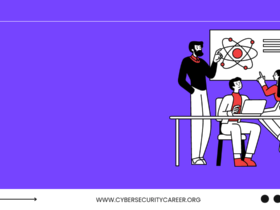Lockheed Martin developed the Cyber Kill Chain Model as an approach to cybersecurity to assist information security teams better comprehend and respond to attacks by outlining what steps attackers typically take when targeting an organization. Lockheed Martin used military principles of engagement for developing this approach so as to more efficiently comprehend and respond to attacks against information systems.
Reconnaissance
Reconnaissance is the initial step of Lockheed Martin’s Cyber Security Kill Chain model for cyber defense. Reconnaissance can take place either online or offline and may involve gathering public email addresses and automated scanning tools that probe company websites or social media networks for data.
Attackers utilize this stage to identify vulnerabilities in their target’s systems that they can exploit, as well as gather support information like network diagrams or hostnames of their intended victim.
Reconnaissance will also involve determining the weapon that they need in order to breach into their target’s network or security system and customize their attack plan accordingly.
The cyber kill chain is not a one-size-fits-all approach; attackers frequently modify their tactics and methods in order to evade detection by traditional cybersecurity tools. Furthermore, attackers sometimes combine stages of the kill chain, making it harder for authorities to stop attacks as they progress.
Additionally, the original kill chain framework has limitations in terms of what it can detect; such as insider threats. Furthermore, this model cannot identify intrusions through remote access as is commonly associated with data breaches in organizations.
Even with its inherent limitations, the cyber kill chain model remains an effective method for detecting threats as they progress through an attack. To effectively use it against potential network attacks, however, an effective plan must include all steps of this chain and be put in place proactively.
Weaponization
Lockheed Martin designed the cyber kill chain as a model to assist security teams understand and prevent attacks against their networks.
Reconnaissance is the initial phase of cyber kill chain operations. This involves gathering intelligence about a target’s network and infrastructure by gathering intelligence on documents, email traffic and web activity in order to detect vulnerabilities.
Armed with information obtained during reconnaissance, cybercriminals use it to craft malware that exploits specific vulnerabilities within their target’s system. They may also take this opportunity to alter security certificates or alter other elements within the network.
Once the weaponized malware is ready, it is delivered through various attack vectors like email phishing scams, malicious websites and USB media drives to its target systems and networks. Once infected with the target systems and network, more disruptive activities may follow including execution of code, compromise of other systems and exfiltration of data.
Cybercriminals will use cryptocurrency to further monetize their activities by demanding ransom payments or selling sensitive data. Organizations need to ensure they have an effective cybersecurity plan in place in order to be prepared against such attacks and ensure a swift response time from cybersecurity personnel when cyber attacks do occur.
Security teams must implement an inclusive and multilayered approach to cybersecurity that includes administrative, technical and physical measures to safeguard their network. However, attacks still happen despite best efforts; organizations therefore need to identify threats at early stages of cyber kill chains so as to reduce both risks and costs associated with remediation efforts.
Exploitation
Under the cyber security kill chain’s exploitation stage, attackers leverage vulnerabilities within an organization’s network to control and exfiltrate valuable data. At this step, hackers may install malware via Trojan horses, backdoors or command-line interfaces – posing yet another risk to network security.
At this step in the cyber security kill chain, hackers use information gleaned during reconnaissance to craft new malware that targets vulnerabilities identified during reconnaissance. They also look for methods of attack which might allow them to remain undetected by security solutions.
After breaking into a target’s network, hackers use tools they developed during reconnaissance to gain further control and exfiltrate valuable data. Hackers may install backdoors that allow remote, secret access into victim computers; or tools that execute files remotely, monitor keystrokes and capture screenshots.
Once hackers gain entry to their target’s systems, hackers may deliver a weaponized payload through a phishing email or USB drive that can be opened by its recipient. Once installed into an organization’s systems, this payload becomes part of its systems and allows attackers to exploit its perimeter by installing tools, running scripts and altering security certificates; exploit attacks could include scripting, dynamic data exchange or local job scheduling as methods of exploitation.
Lockheed Martin first created its cyber security kill chain model in 2011 as a military model to assist cybersecurity teams in understanding and stopping attacks at different stages. Though some have criticized its ineffectiveness at handling web-based threats, the cyber security kill chain remains an indispensable resource for organizations looking to strengthen their cybersecurity strategies.
Exfiltration
Lockheed Martin first developed its Cyber Security Kill Chain model in 2011, providing security teams with a framework to identify points at which they can prevent, detect or intercept attackers. It outlines various stages of common cyberattacks like reconnaissance, weaponization and exploitation for ease of reference.
Reconnaissance is the initial stage of cyber kill chains, with its primary focus being external assessment of an organization’s security from an outside-in perspective. This may include monitoring user activity or data movement anomalies that signal possible vulnerabilities within it.
At this step, attackers typically employ malware and other cyberweapons to gain entry to a network and install these tools on target computers in order to meet their objectives.
Once an attack is underway, hackers typically move laterally through a network in search of more valuable data and systems, before trying to conceal their activity by exfiltrating whatever knowledge was gained through this way.
Phishing attacks are one of the most prevalent means of data exfiltration, used to steal usernames and passwords, customer databases, financial information, intellectual property rights and more from victims. Phishing attacks may involve careless insiders as well as external attackers that cause significant financial loss for their target.
Information can be stolen and sold on the black market if taken by either employees or outsiders, leading to huge revenue potential for any organization of any size. As such, having a comprehensive cyber security incident response strategy in place for any size company is absolutely critical for their survival and should include regular validation across your kill chain to detect, stop and mitigate any incursions which arise.
Monetization
Monetization is an extension of Lockheed Martin’s original cyber security kill chain model developed in 2011. This step involves monetising assets, services, and resources.
As part of their goals, attackers often try to maximize the profitability of successful attacks by extracting income through ransom payments, selling data to third-party sellers or renting hijacked infrastructure out to other criminals.
Monetization refers to the process of turning something into money through banking sector processes such as coining currency, printing banknotes or turning gold and other precious metals into monetary value.
Monetization of government debts, where the Federal Reserve buys government-issued bonds to increase its bank reserves. While this process increases money supply and may contribute to inflation, it should generally be avoided as it creates additional demand for money that may cause inflation.
Monetization takes many forms; from using data to generate revenue to selling advertising or subscriptions to attract more traffic, all can contribute towards making something profitable. Monetization of web content takes various forms such as leveraging advertisements or subscriptions as means to generate additional income streams.
The original cyber kill chain framework was intended to secure perimeter-focused systems and does not detect insider threats, such as attacks using compromised credentials – one of the most dangerous forms of attack today. Nonetheless, with appropriate tools defenders can monitor data flow for suspicious activity and stop attacks before they happen; this is particularly vital if an attacker gains access to sensitive information as their goals will likely move quickly once in hand.










Leave a Reply